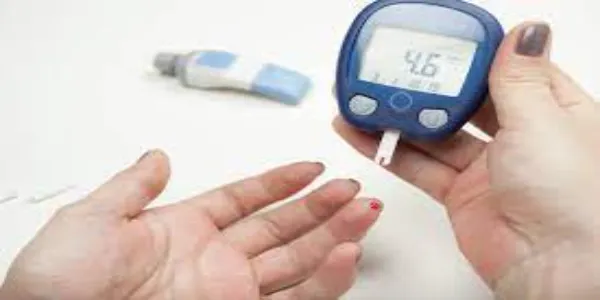Know all about glucometer

Posted Date: March 14th, 2023
A blood glucose meter also known as a glucometer is a medical device used to measure the amount of glucose (sugar) present in a person’s blood. It is used by people with diabetes to monitor their blood sugar levels which helps them to monitor their condition and avoid complications.
To use a blood glucose meter a small drop of blood is usually obtained by Using a lancet to prick your finger and the blood is then placed on a test strip. The test strip is inserted into the meter which then measures the glucose level in the blood and displays the result on a screen.
Types of blood glucose meter
Blood glucose meters come in different types and varieties but they all serve the same basic purpose of measuring blood glucose levels. Here are some common types of blood glucose meters:
1) Traditional glucose meter: This device is a handheld device that requires a small drop of blood to be placed on a test strip. The strip is then inserted into the meter which reads the glucose level in the blood. The report is displayed on the screen.
2) Continuous glucose monitoring (CGM) system:This is a wearable device that continuously measures glucose levels throughout the day and night. A tiny sensor is inserted under the skin to measure glucose levels in interstitial fluid. The readings are sent wirelessly to a receiver or smartphone app.
3) Flash glucose monitoring system: This is a newer type of CGM that does not require a receiver or smartphone app. Instead the sensor is scanned with a reader or smartphone to get a glucose reading.
4) Non-invasive glucose meters: These meters use technologies like infrared light or ultrasound to measure glucose levels without requiring a blood sample. However these meters are not as accurate as traditional meters and are not widely available.
5) Smart glucose meters: These meters can connect to a smartphone app or other device to track glucose levels over time and provide insights into patterns and trends.
6) Talking glucose meters: These meters have a built-in voice function that speaks out the glucose readings for people with visual impairments or other disabilities.
It’s important to choose the type of glucose meter that suits your needs and lifestyle. Your doctor or diabetes educator can help you choose the best type of meter for you.
Usage of blood glucose meter
A blood glucose meter is a medical device used to measure the level of glucose (sugar) in the blood. This device is commonly used by people with diabetes to monitor their blood glucose levels and make adjustments to their diet, medication or physical activity as needed.
Here are the steps to using a blood glucose meter:
1. Wash your hands with soap and warm water. Dry them well.
2. Turn on the blood glucose meter and insert a test strip into the meter. Make sure the meter is calibrated correctly.
3. Prick the side of your fingertip with a lancet to obtain a small drop of blood.
4. Touch the test strip to the drop of blood. The meter will display the glucose level in your blood within a few seconds.
5. Record the result in a logbook or on your smartphone or computer. You may also want to note any relevant information, such as the time of day what you ate or how you feel.
6. Dispose of the lancet and used the test strip according to your healthcare provider’s instructions.
It’s important to use your blood glucose meter regularly, as recommended by your healthcare provider. This will help you manage your diabetes and avoid complications. If you have any questions or concerns about using your blood glucose meter, talk to your healthcare provider or a diabetes educator.
Choosing the right blood glucose meter
Choosing the right blood glucose meter is an important decision for people with diabetes. Here are some factors to consider when selecting a blood glucose meter:
1. Accuracy: The accuracy of the meter is critical in getting an accurate reading of your blood glucose level. Look for a meter that has been tested and proven to be accurate.
2. Ease of Use: The meter should be easy to use and read. Some meters have larger screens or are backlit which can make them easier to read.
4. Memory: Many meters store previous blood glucose readings which can be helpful for tracking trends over time.
5. Cost: Blood glucose meters can vary in price and the cost of test strips can also add up. Consider the cost of both the meter and test strips when making your decision.
6. Connectivity: Some meters can connect to your smartphone or computer to automatically track your readings which can be helpful for monitoring your diabetes.
7. Customer Support: Consider the level of customer support provided by the manufacturer. You may need help troubleshooting issues or have questions about how to use the meter.
It is important to discuss your options with your healthcare provider, who can help you select a meter that is best suited to your needs.
Related Posts
Dr. Emily Carter is a seasoned health writer and wellness advocate at Healths News Today. With over a decade of experience in the healthcare industry, she specializes in translating complex medical information into easy-to-understand content that empowers readers to make informed decisions about their health.








